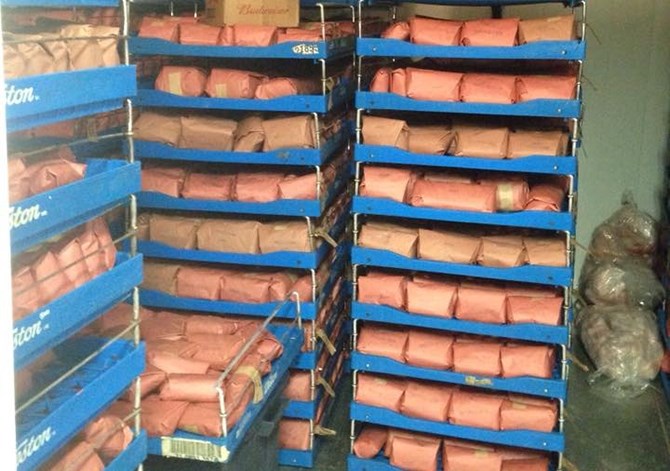
Seized meat has been cut up and is ready for redistribution to those in need in the Peace region. The B.C. Conservation Officer Service ensures illegally taken wild meat is distributed to the needy or to First Nations from whose traditional land it came from.
Image Credit: FACEBOOK
November 02, 2017 - 4:31 PM
PENTICTON - The B.C. Conservation Officer Service works to ensure illegally taken wildlife doesn’t go to waste in any of its conservation regions in the province.
If conditions are right, animals struck by vehicles can also find their way to someone’s dinner table in the name of conservation and as a way of assisting those in need.
A post on the conservation service Facebook page says most of the eight regions in the province distribute seized wildlife meat to food banks or local Indian bands.
In the Okanagan region, which runs from Shuswap Lake to Osoyoos, conservation inspector Tobe Sprado says about a half dozen seized animals, usually deer, are distributed to First Nations and food banks in the area on an annual basis.
The conservation service tries to distribute the animals back to the band’s whose traditional territory it came from. He says the meat is given to the band office where an elder will usually decide how the meat will be distributed.
Sprado says when it comes to distributing to food banks, the hunter will sometimes be assessed the cost of butchering the animal as part of his penalty.
The number of animals seized in the Okanagan region varies from year to year, often depending on changing regulations.
“It can vary, especially if there are new regulations that are imposed, hunters don’t read that information and all of a sudden they are caught with an animal that may have been legal the previous year and no longer is,” he says, adding until that educational component is addressed there can be a spike in animals seized for a year or two.
“The Okanagan is not really a moose or elk destination, primarily it’s deer we deal with here,” Sprado says, noting the Peace region in northwestern B.C. has already seized 25 moose, six elk, five deer and three mountain sheep totalling 15,000 pounds of meat this year.
The conservation service will also distribute road kill under the right circumstance. Sprado says depending on how the animal was hit, it may be salvageable. He says moose or elk are generally around three quarters recoverable in a collision, but a deer, unless just hit in the head, typically isn’t salvageable.
“There are times when we would potentially give road kill meat to people we believe require it for sustenance. It's worth remembering even if the animal ends up dying in the bush, the carcass isn’t wasted, as other animals and carrion feed on it in the wild," he says.
To contact a reporter for this story, email Steve Arstad or call 250-488-3065 or email the editor. You can also submit photos, videos or news tips to the newsroom and be entered to win a monthly prize draw.
We welcome your comments and opinions on our stories but play nice. We won't censor or delete comments unless they contain off-topic statements or links, unnecessary vulgarity, false facts, spam or obviously fake profiles. If you have any concerns about what you see in comments, email the editor in the link above.
News from © iNFOnews, 2017